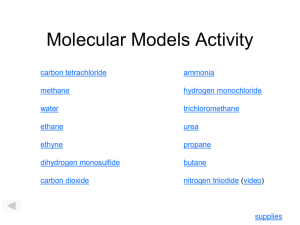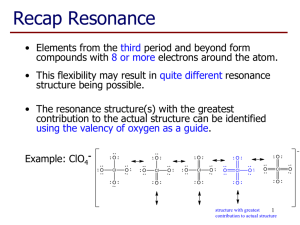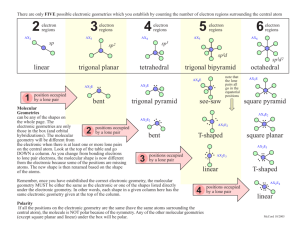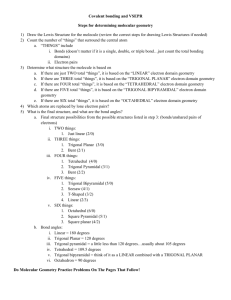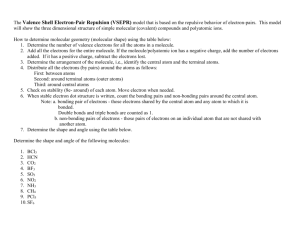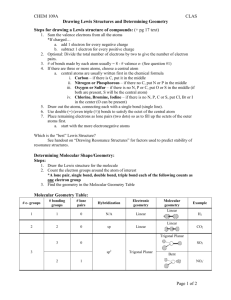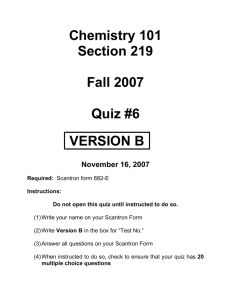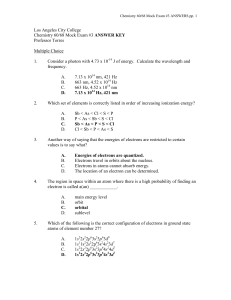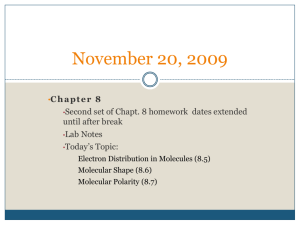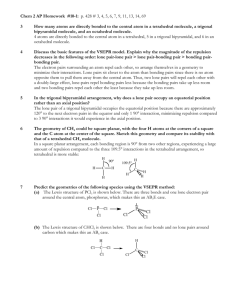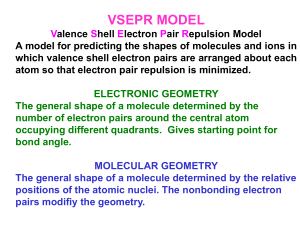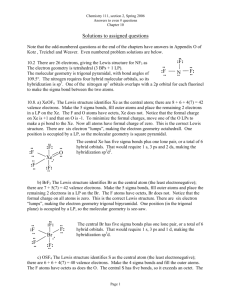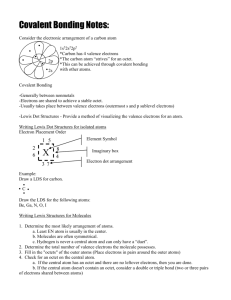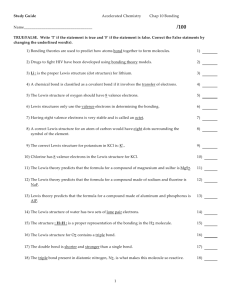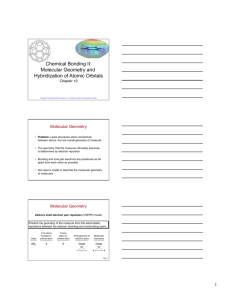One Page Lesson: Determining Electron
advertisement
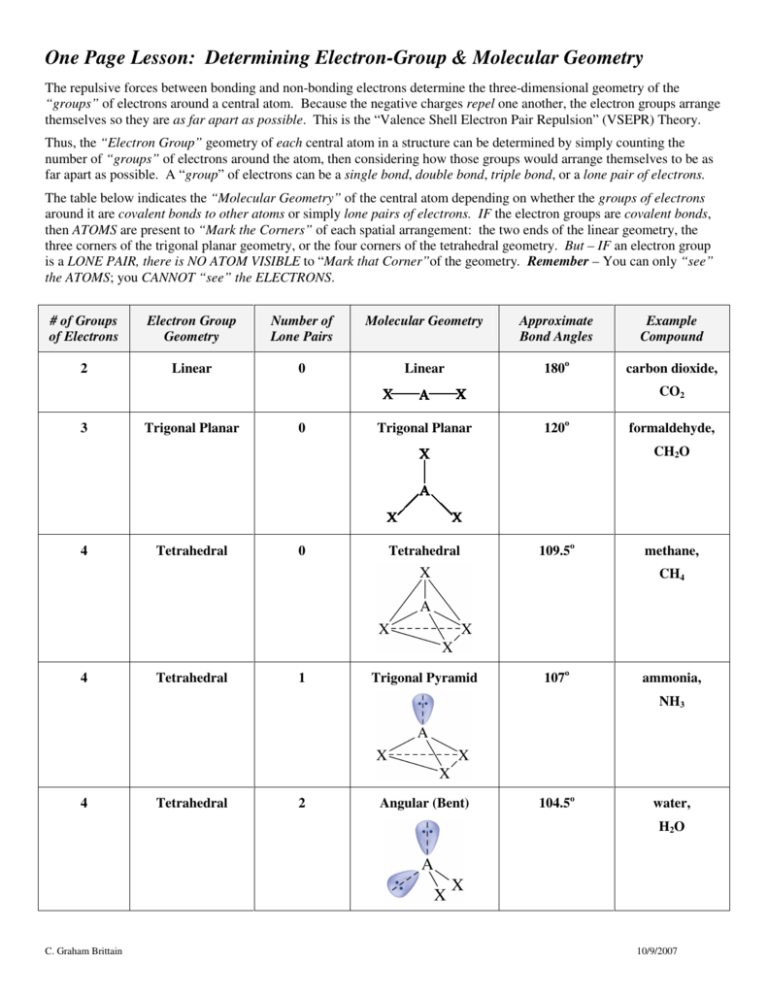
One Page Lesson: Determining Electron-Group & Molecular Geometry The repulsive forces between bonding and non-bonding electrons determine the three-dimensional geometry of the “groups” of electrons around a central atom. Because the negative charges repel one another, the electron groups arrange themselves so they are as far apart as possible. This is the “Valence Shell Electron Pair Repulsion” (VSEPR) Theory. Thus, the “Electron Group” geometry of each central atom in a structure can be determined by simply counting the number of “groups” of electrons around the atom, then considering how those groups would arrange themselves to be as far apart as possible. A “group” of electrons can be a single bond, double bond, triple bond, or a lone pair of electrons. The table below indicates the “Molecular Geometry” of the central atom depending on whether the groups of electrons around it are covalent bonds to other atoms or simply lone pairs of electrons. IF the electron groups are covalent bonds, then ATOMS are present to “Mark the Corners” of each spatial arrangement: the two ends of the linear geometry, the three corners of the trigonal planar geometry, or the four corners of the tetrahedral geometry. But – IF an electron group is a LONE PAIR, there is NO ATOM VISIBLE to “Mark that Corner”of the geometry. Remember – You can only “see” the ATOMS; you CANNOT “see” the ELECTRONS. # of Groups of Electrons Electron Group Geometry Number of Lone Pairs Molecular Geometry Approximate Bond Angles Example Compound 2 Linear 0 Linear 180o carbon dioxide, CO2 3 Trigonal Planar 0 Trigonal Planar 120o formaldehyde, CH2O 4 Tetrahedral 0 Tetrahedral 109.5o methane, CH4 4 Tetrahedral 1 Trigonal Pyramid 107o ammonia, NH3 4 Tetrahedral 2 Angular (Bent) 104.5o water, H 2O C. Graham Brittain 10/9/2007
